Growing home plants, seedlings for summer cottages is not so much for saving as for the soul. I want the plants to be strong, healthy, to please with foliage and flowers, fruits. In our climate, this is not always possible without additional efforts. The main problem is the short daylight hours. Extend it with a backlight. And there are special plant lamps for this. They are called grow light (grow light), agrolamp (agro-lamp). There are enough names, but the essence is the same - they are light sources for better growth, flowering and fruiting of plants.
What is a grow light and how does it differ from the usual?
For the growth and development of plants, light waves of a certain part of the spectrum are needed. In our color perception, this is light in the red and blue range. The wavelength is 420-460 nm in the blue part of the spectrum and 630-670 nm in the red. Plants need the rest of the spectrum, but in much smaller quantities.
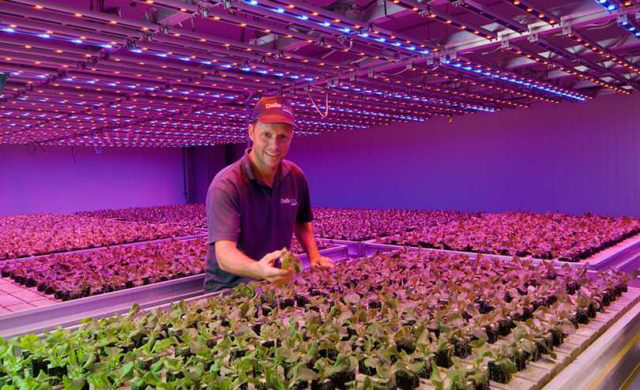
When growing seedlings, when maintaining a greenhouse, the plants "light up" - they extend the daylight hours with the help of additional lighting. You can do this with ordinary lamps, since their spectrum also contains light radiation of the required range. A grow light differs in that the spectrum consists mainly of waves of the required length. So, in theory, they will be more economical than conventional backlighting. Indeed, the spectrum “unnecessary” for plants consumes less energy. This type of light sources is also called an agrolamp; the spelling is an agro-lamp. They sell not only individual lamps, but also whole lamps. They are also called grow light , agro-lamp. In general, they call it whatever you like. But the essence is the same - in this light source, red and blue light are present in large quantities.
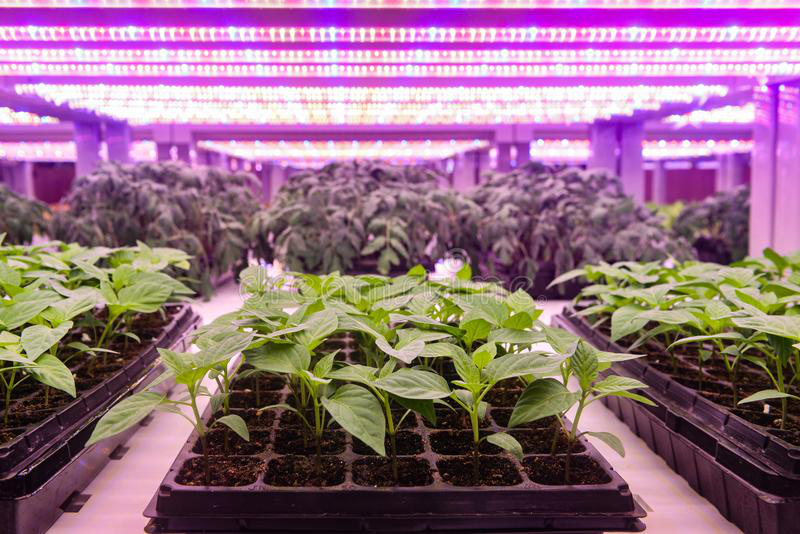
There are two types of grow lights. Some - gas-discharge ones - have the entire spectrum, but their difference is that the radiation intensity is higher in the required range. This is reflected in the spectrograms of such light sources. The second type of lamps is narrowly segmented fluorescent and LED. You can distinguish such a grow light from a conventional one by turning it on. It shines with a purple light due to the predominant red and blue spectrum.
Types of grow lights
Special lamps for plant illumination can be of different types. There are no ordinary incandescent lamps - it is simply impossible to change the glow spectrum here. All the others seem to be:
Sodium gas discharge lamps (HPS).
Metal halide (MGL).
Mercury gas discharge lamp (DRL).
Luminescent (with different connectors, including standard E27).
LED (strips, lamps with different sockets).

As you can see, there is a long list - these lamps are available in stores. All of them are imperfect, so for the choice it is desirable to know their features, advantages and disadvantages. We will deal with all the main types, their properties and application features. Let's say right away that we reflect only technical issues. The technology of effective lighting at different stages of growing, for different types of plants - this is not a topic for our site.
Sodium grow light
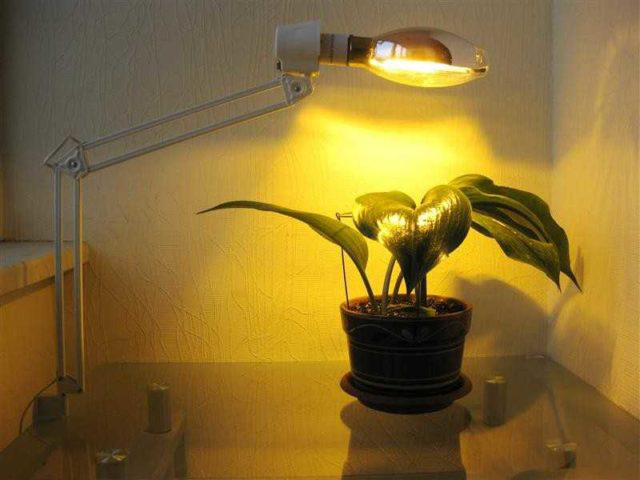
This type of plant light has been around for a long time. It is also used in large greenhouses that specialize in growing vegetables, and those that are "sharpened" for seedlings. With basic sodium lamps, the light travels in all directions. This is acceptable for greenhouses, but inconvenient for the house, as it blinds the eyes. There is a modification of sodium lamps - DNAZ. Part of the bulb has a mirror coating, which allows you to create a directed stream of light. Conventional sodium agrolamps can be installed in luminaires with reflectors. They give roughly the same effect as with mirror coating. For small projects, boxes with reflective walls can be made. This allows you to reduce the cost of backlighting, but in a small volume it is necessary to monitor the air temperature - lamps of this type get very hot.
Metal halide lamps (MHD) for plants
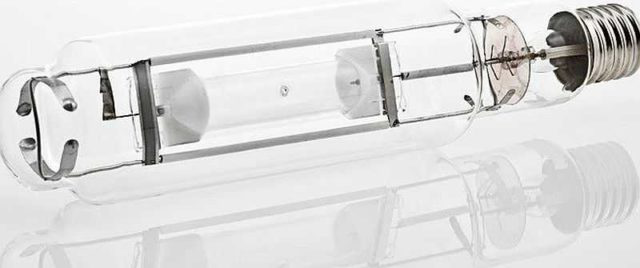
This is one of the subspecies of gas-discharge lamps, characterized by the presence of halogen vapors in the bulb. The rest of the structure is very similar to other gas discharge lamps. In the same way, for work, you need a special lamp - with a control gear and better than an electronic type. Moreover, the protective glass on the phyto-luminaire must be strong, since the flask may explode due to high pressure.
If we look at the spectrum of light emitted by lamps of this type, we see clear bursts in the green and yellow-orange zones. There is less blue, but it is enough. This color combination is typical for the sunlight emitted in early spring. That is, MGF will be good at the stage of early plant development - this is an excellent light for growing seedlings. With MGL lamps, plants have a powerful root system, they grow actively, do not stretch up, a sufficient number of internodes and buds are laid. The same type of lamp is suitable for lighting aquariums - it promotes the active growth of algae. But at the stage of flowering, formation of the ovary and ripening of fruits, this type of illumination in the usual version is absolutely ineffective.
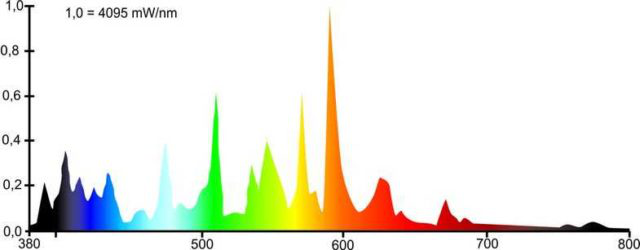
There are MGL lamps with an extended red spectrum, which are suitable not only for the beginning of the growing season, but also for the formation and maturation of the crop. So you can choose a spectrum for any type of plants, but the price of special lamps is not happy.
Mercury gas discharge lamp (DRL)
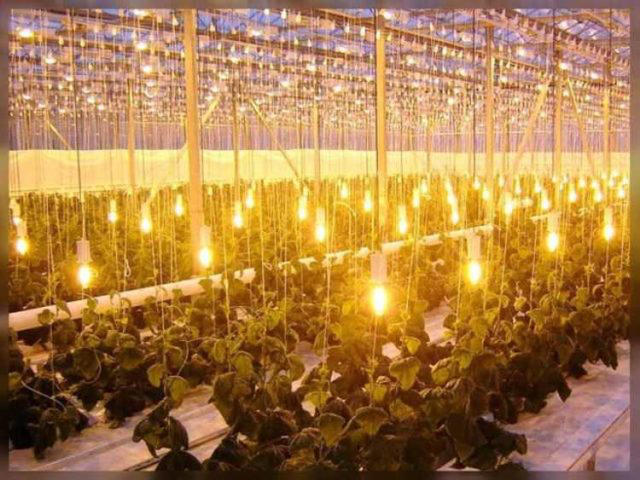
The difference between this type of gas discharge lamps is that they can be used without additional equipment. They can simply be screwed into a standard lamp holder connected to a 220 V network. The second point is that the bulbs are made with a mirror coating, which allows you to form a directed stream of light and not waste energy "on lighting the ceiling". A gas-discharge mercury grow light is designated as DRLF. Differs in more intense radiation in the red and blue parts of the spectrum.
Luminescent grow lights
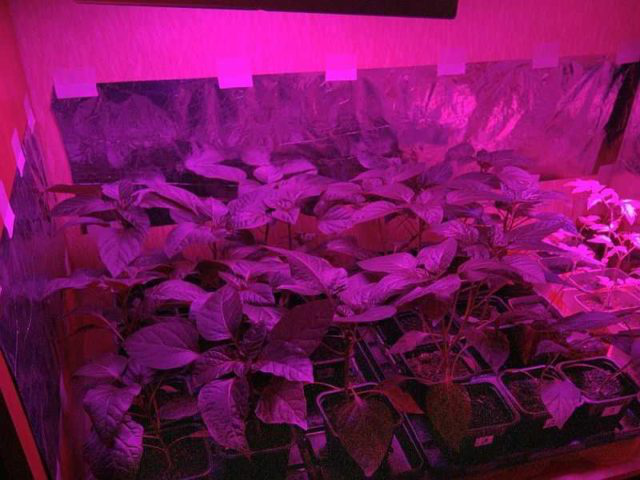
This is also one of the types of gas-discharge lamps - we know it from household lamps. By the way, you can grow seedlings with conventional fluorescent lamps, but it grows tall and thin, with an insufficiently developed root system. Therefore, after all, it is better to use special lamps. Yes, they are many times more expensive than conventional ones, but this is due to a more complex production process.
LED (Light Emitting Diode) grow light
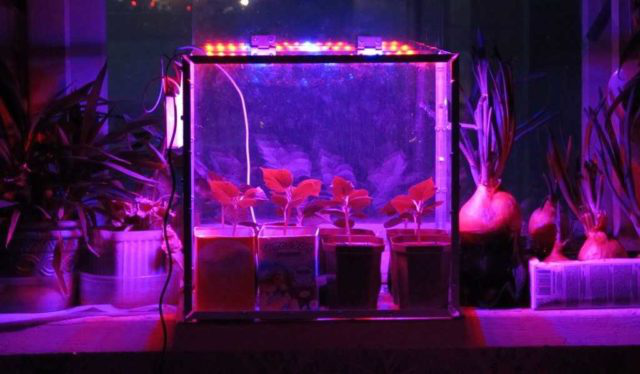
LEDs became inexpensive relatively recently, and since then they have been used to illuminate plants. The production technology is such that the crystals are grown in monochrome. There are both wireframe and blue ones. But to illuminate plants, a certain wavelength is needed - for blue, 420–460 nm, for red, 630–670 nm. LEDs with such a spectrum receive the prefix "phyto".
They are produced both in bulk - in the form of single crystals, and in ribbons of a certain power. If we take the "phyto tape", then it contains red and blue LEDs, so that the spectrum is obtained, it seems necessary. But usually red light predominates in LED strip for plants. It is good for plant growth, flowering. More blue is needed to form roots. So, "standard" phyto-tapes are not suitable for seedlings. Unless you buy a separate blue one and add it to the phyto-LED strip.
There are also LED grow lights. Red and blue elements have already been added to them to some extent. The only problem is that they are also sharpened for vegetation and flowering. For seedlings, they are ineffective: a weak root system, long internodes are obtained. Therefore, for growing seedlings, it is better to either make the lamp yourself, or again add blue.
In general, an LED grow light is an economically correct solution. There are also opponents of this technology, but they have no clear arguments - the main argument is that large greenhouses are in no hurry to switch to new grow lights.























